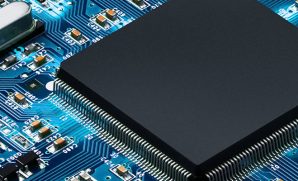Top seven tips so you can create a reliable embedded system
Publish Date: September 21, 2021Reliability is aptly defined as the precondition of trust. Where security fails, reliability can take over to make sure the wheels keep running. Security comes into play in case of intentional failures. On the other hand, reliability is concerned with accidental losses due to weak design—ensuring reliability guarantees that the buck doesn’t stop across the value chain regarding embedded systems and their place in modern industries and the world. However, writing reliable code doesn’t happen by accident.
Despite the hopes of embedded engineers and the optimism of developers, embedded systems can shake their faith in their microcontrollers. Every bit and byte requires maintenance and meticulous dedication to ensure that the software runs correctly over time with the associated hardware.
There are plenty of techniques that you can employ to create reliable embedded systems floating around on the internet and academic forums, but here are seven tips that capture the essence of the process and will go a long way in generating a disciplined development of embedded systems.
Here are the top seven tips that will help you do that.
Use what is known
An unintended code to jump out of the application case is relatively rare but not uncommon. The resulting behavior of the system would also be undefined. The trick is the fill commands with known patterns in the place of unused memory. If something goes wrong, the program executes outside of the application space, allowing corrective measures to occur.
Run a cyclic redundancy check
Keep the CRC or checksum in memory for verifying the application status periodically or for extended run times.
Perform a RAM check
It is essential to keep a tab on the hardware being used to build a robust embedded system. The eventuality of hardware is a failure, which can be prolonged by checking internal and external RAM on start. Functioning RAM reads should match what was written originally, an anomaly flagging off a concern.
Stack monitor to the rescue
The stack is usually used dynamically, executing variables and storing information, causing it to grow within its allocated memory. However, this growth is beyond the compile-time and size limit, and a sure-shot way of checking if the stack is behaving is to implement a stack monitor. It creates a buffer zone between the stack and the rest of the memory zone, filled with a known bit of pattern. If the bit pattern changes, there is a real possibility that the system collapses, which the monitor can log for diagnosis.
Protect the memory at all costs
Memory protecting units are used to facilitate memory spaces where separate tasks can be executed without interference. Please take advantage of their presence in the unit to perform protective measures in case something unexpected happens.
Adopt a watchdog
A reliable tool to put out fires, it is a favorite when keeping the program separate and going in an emergency. Its purpose is to help the system go through a hardware reset recovery using a timer independent of its activity, even in the case of failures.
Avoid allocating dynamic memory
On a resource-constrained system, dynamic memory allocation can result in bugs and memory leaks. Most embedded systems, unlike computers, do not have a memory heap to afford fragmented memory.
One method isn’t enough
Testing methodologies should ideally be linked to requirements. It examines running code, looks for architectural flaws and other weaknesses. Teams can apply various levels of software testing by abstraction with continuous delivery.
Each passing year, it becomes increasingly important to strengthen the embedded systems design as the global embedded system market size surpassed US$ 13.5 billion in 2020, growing at a CAGR of 7% from 2021 to 2027.[1] For a fault-free and deductive identification of chokepoints, it is pertinent to secure embedded systems from attackers. An investment in security will bolster even a reliable embedded system with a good payoff.
Learn how YASH Technologies can help you bolster your embedded systems by writing to us on info@yash.com or visit us on www.yash.com to explore all our services.






